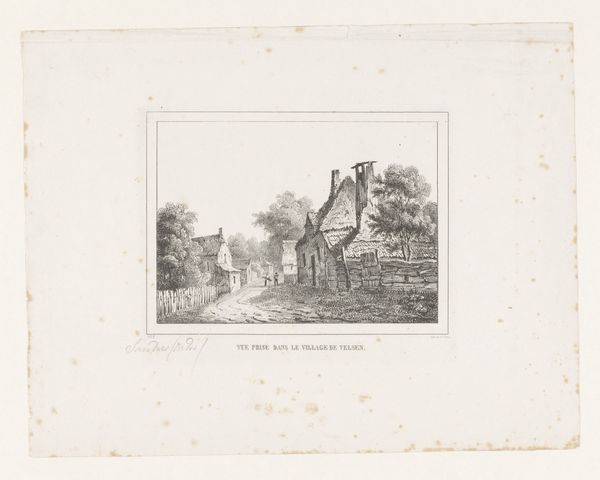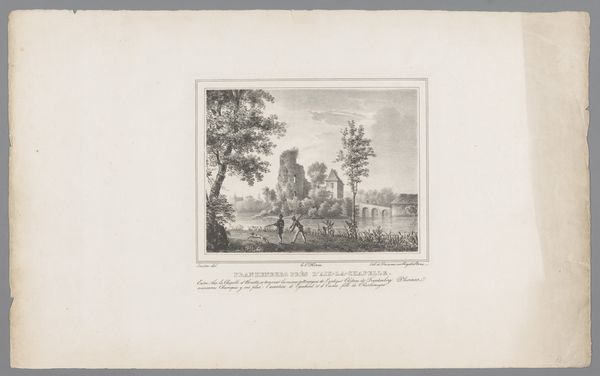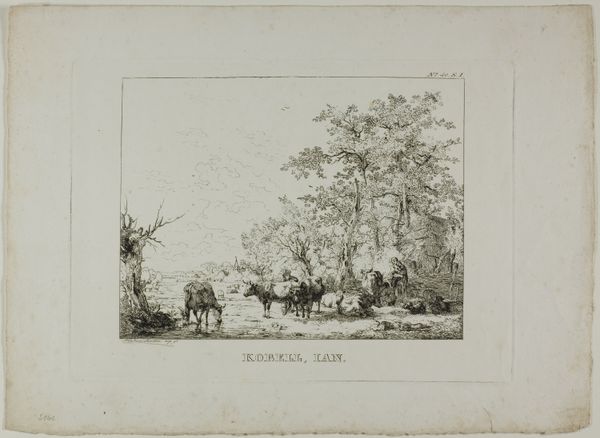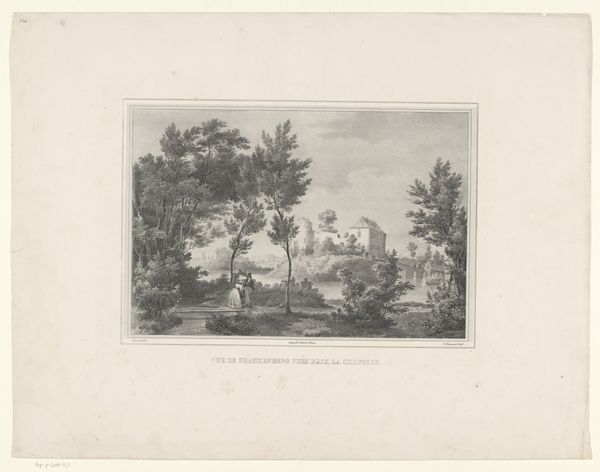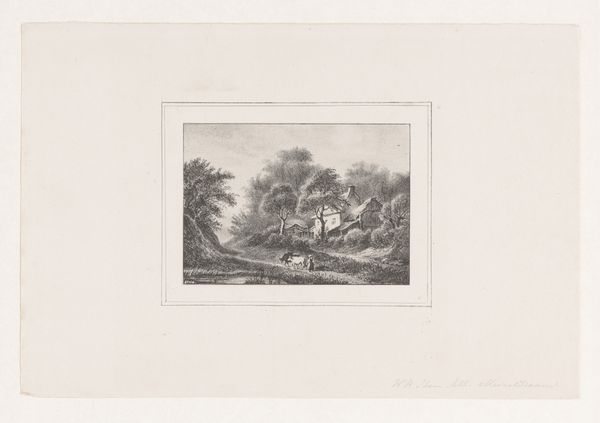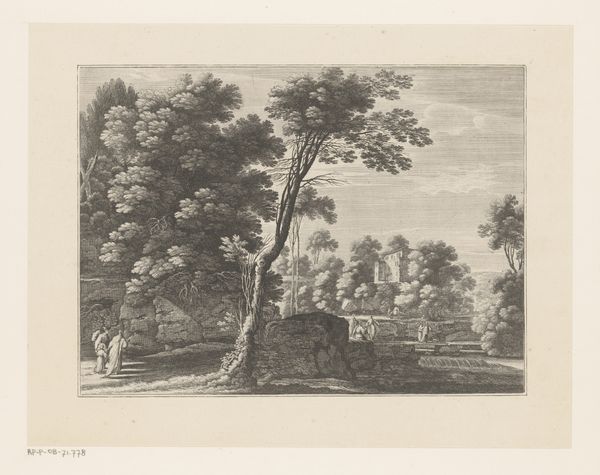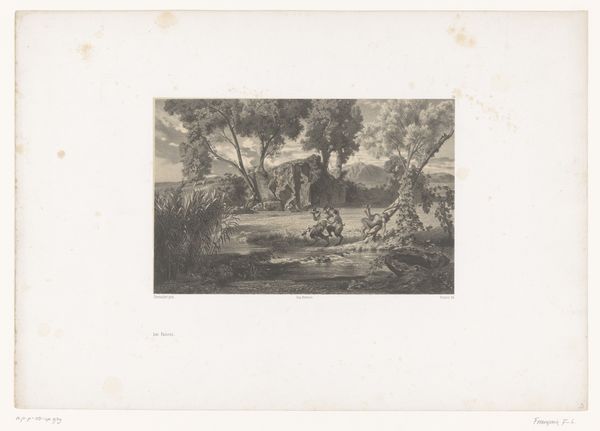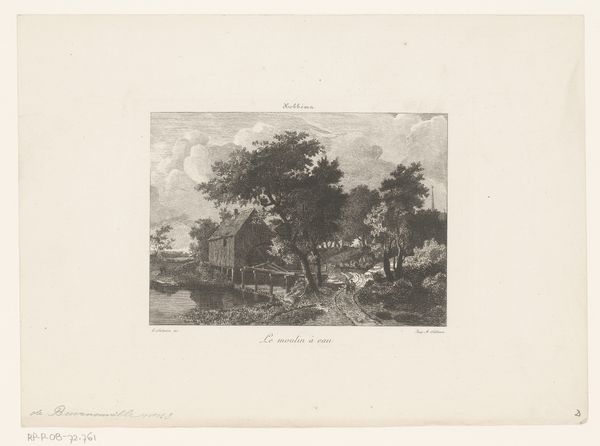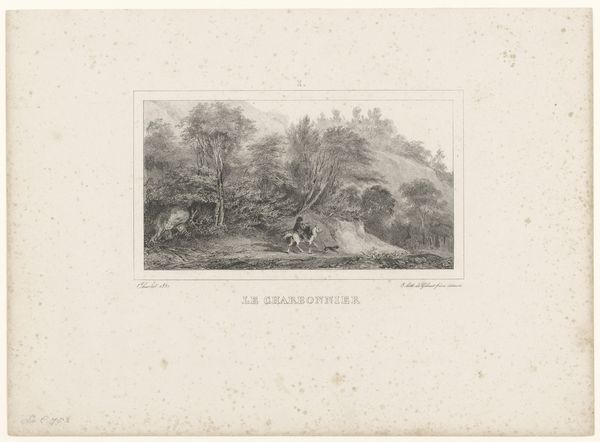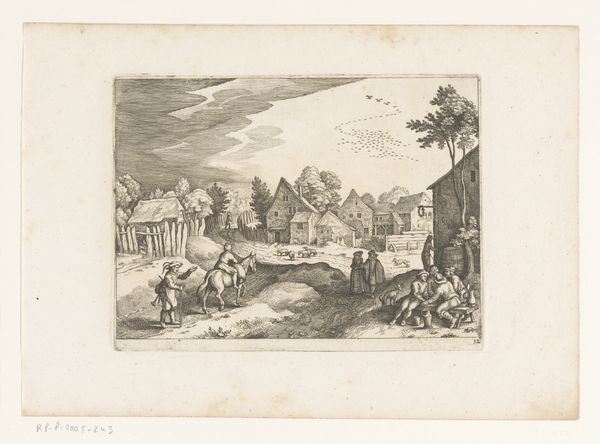
print, etching, engraving
# print
#
etching
#
old engraving style
#
landscape
#
figuration
#
line
#
genre-painting
#
academic-art
#
engraving
#
realism
Dimensions: height 159 mm, width 197 mm
Copyright: Rijks Museum: Open Domain
Editor: This is "Landschap met veehoeders" which roughly translates to "Landscape with cattle herders". It’s an etching, an engraving made sometime between 1844 and 1904 by Emile-Florentin Daumont. The use of line and detail is pretty stunning. What particularly catches your eye? Curator: Given my focus, I'm drawn to consider how Daumont created this print. The labour involved in etching and engraving—the repetitive, physical act of carving lines into a plate. The materials themselves, the metal, the acid, the paper – they dictate so much. Consider the socio-economic context: Who had access to these materials and the training required? This wasn't accessible to all, it speaks to the commodification of images in the 19th century. The print could then be widely distributed and consumed by the emerging middle class. Editor: So, the act of making becomes as significant as what is depicted. How does the technique influence its reception, compared to, say, an oil painting of the same scene? Curator: Precisely. While oil paintings retained an aura of the unique and precious object for a select few, this print democratized art, placing idealized pastoral imagery within reach of many. We should think about how Daumont's choices - his selection of materials, the deployment of specific artisanal skills, affect the work’s inherent social values. Did the etching process amplify or mute those values in comparison to other more expensive or difficult media available at the time? Editor: That's fascinating; I never thought about prints as democratizing art in that way, given the labor involved. Curator: Absolutely. Recognizing the print as a multiple is key. Think about how it was sold, distributed, and consumed. This lens allows us to better understand not just its aesthetic qualities but also its role in shaping social taste and economic exchange during that era. Editor: So I am gathering that we can discuss landscape or herders from "Landschap met veehoeders", but that you would argue that discussing medium and manufacturing help us explore and understand it with better depth and precision. Thanks for clarifying things for me!
Comments
No comments
Be the first to comment and join the conversation on the ultimate creative platform.
